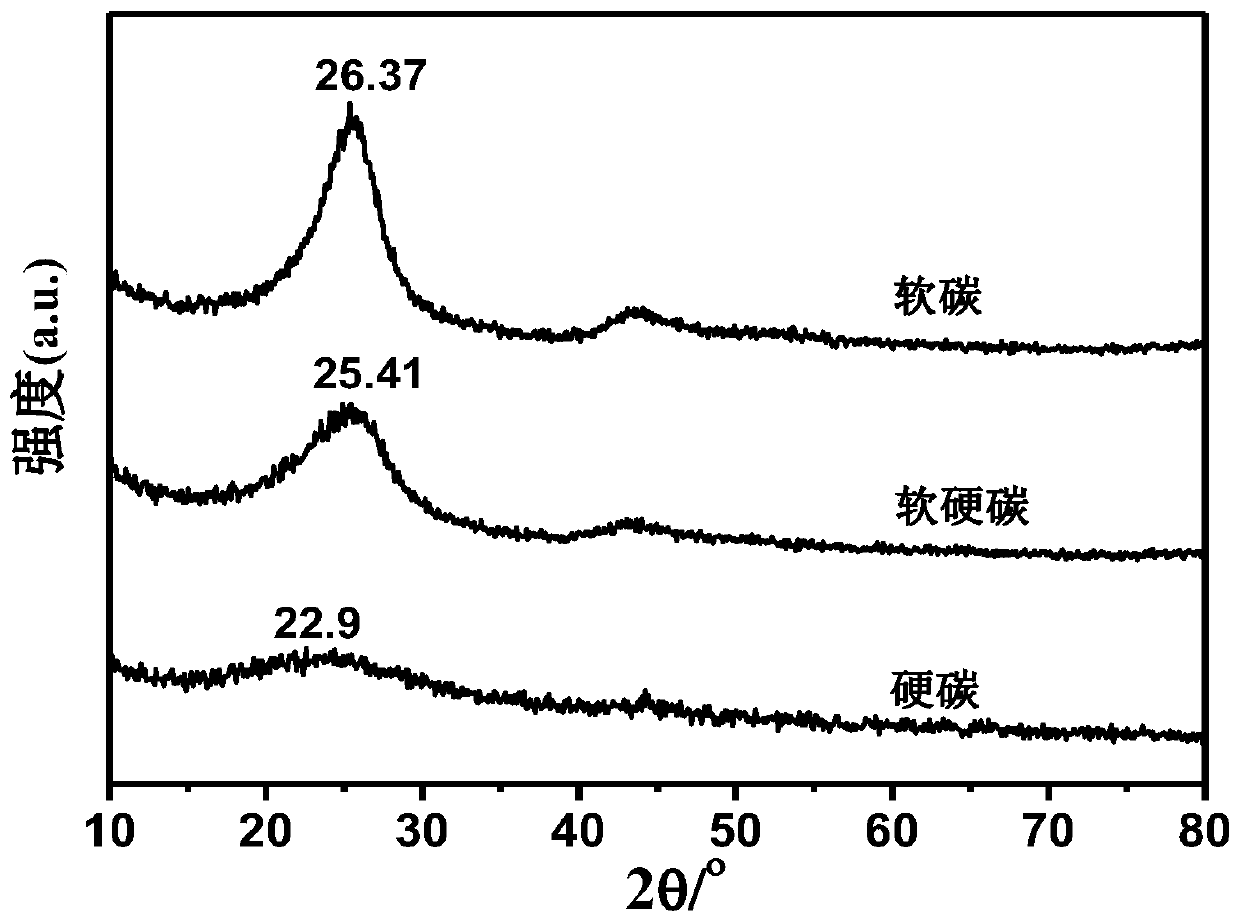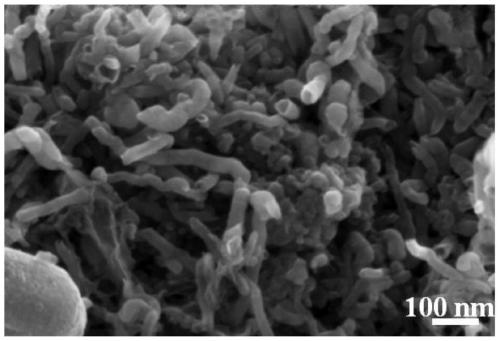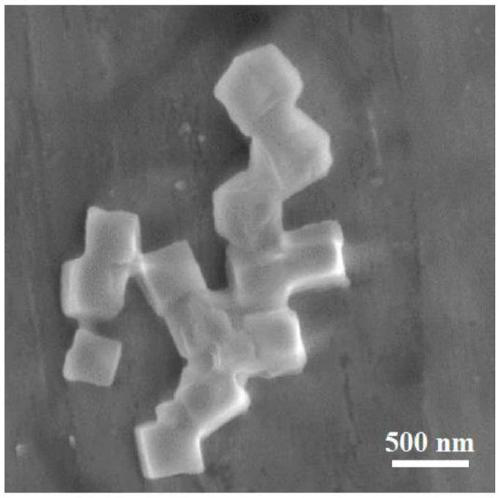Soft and hard carbon composite porous negative electrode material for sodium-ion battery and preparation method thereof
A sodium-ion battery and negative electrode material technology, applied in battery electrodes, secondary batteries, circuits, etc., can solve problems such as poor cycle stability, reversibility of rate performance, etc., to improve rate performance, facilitate deintercalation, and large ratio The effect of capacity
- Summary
- Abstract
- Description
- Claims
- Application Information
AI Technical Summary
Problems solved by technology
Method used
Image
Examples
Embodiment 1
[0031] Preparation of a soft and hard carbon composite porous negative electrode material for sodium ion batteries
[0032] The ethanol solution of 60mL of dimethylimidazole (containing 930mg of dimethylimidazole) was added dropwise to the ethanol solution of 60mL of cobalt nitrate (containing 100mg of cobalt nitrate), and after stirring rapidly at room temperature for 30min, the precursor (ZIF -67) solution. Add 5g of polyvinyl alcohol to the precursor solution, reflux at 85°C for 2h to form a gel, cool naturally, freeze-dry at -60°C for 12h, and then heat-treat at 1000°C for 4h in an inert gas atmosphere to obtain a sodium-ion battery. Soft and hard carbon composite porous anode materials. Depend on figure 1 It can be seen that the X-ray diffraction (XRD) pattern of the soft and hard carbon composite porous negative electrode material prepared in Example 1 shows that the peak shape of the composite material is between pure soft and hard carbon, indicating that the degree o...
Embodiment 2
[0040] Preparation of a soft carbon negative electrode material for sodium ion batteries
[0041] 60 mL of ethanol solution of dimethylimidazole (containing 930 mg of dimethylimidazole) was added dropwise to 60 mL of ethanol solution of cobalt nitrate (containing 100 mg of cobalt nitrate). After the mixed solution was left to stand for 24 hours, it was centrifuged, washed and dried to obtain the precursor ZIF-67. Then put the precursor ZIF-67 in a magnetic boat, raise the temperature to 600°C at a rate of 5°C / min, keep it in a nitrogen atmosphere for 4h, and soak it in 35% hydrochloric acid for 3h after natural cooling to remove The Co simple substance remaining on the sample was finally washed with deionized water, filtered with suction, and dried to obtain a soft carbon negative electrode material.
[0042] Depend on figure 1 It can be seen that the X-ray diffraction (XRD) pattern of the soft carbon negative electrode material prepared in Example 2 shows two diffraction pe...
Embodiment 3
[0045] Preparation of a hard carbon negative electrode material for sodium ion batteries
[0046] Dissolve 5 g of polyvinyl alcohol in 10 mL of deionized water, stir ultrasonically for 30 min to disperse evenly, then transfer to a single-necked round-bottom flask, reflux and stir at 85 °C for 5 h to form a gel, cool, centrifuge, and freeze-dry at -60 °C for 12 h to obtain Precursor, put the precursor in a magnetic boat, raise the temperature to 1000°C at a heating rate of 2°C / min, keep it warm for 4h in a nitrogen atmosphere, and obtain a hard carbon negative electrode material for a sodium-ion battery after natural cooling.
[0047] Depend on figure 1 It can be seen that the X-ray diffraction (XRD) pattern of the hard carbon negative electrode material prepared in Example 3 shows that the hard carbon presents two broad diffraction peaks, indicating an amorphous structure, and 2θ is the crystal corresponding to the peak at 22.9°. The lattice spacing is 0.4 nm, which is larger...
PUM
| Property | Measurement | Unit |
|---|---|---|
| diameter | aaaaa | aaaaa |
| quality score | aaaaa | aaaaa |
Abstract
Description
Claims
Application Information
 Login to View More
Login to View More - R&D
- Intellectual Property
- Life Sciences
- Materials
- Tech Scout
- Unparalleled Data Quality
- Higher Quality Content
- 60% Fewer Hallucinations
Browse by: Latest US Patents, China's latest patents, Technical Efficacy Thesaurus, Application Domain, Technology Topic, Popular Technical Reports.
© 2025 PatSnap. All rights reserved.Legal|Privacy policy|Modern Slavery Act Transparency Statement|Sitemap|About US| Contact US: help@patsnap.com



